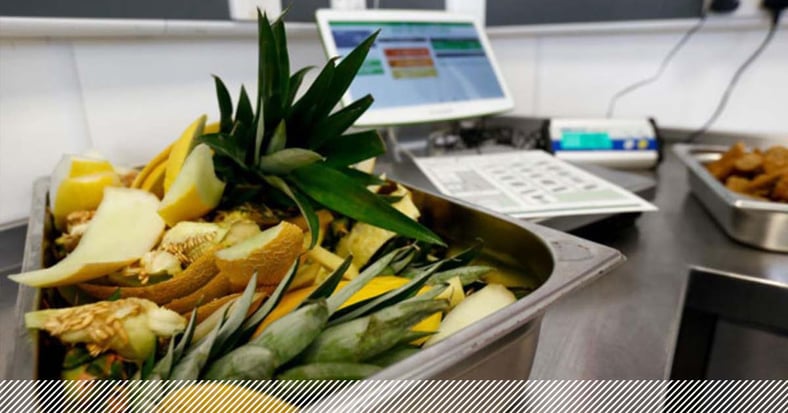Sodexo's Middle East Regional Project Manager Umesh Jaiswar on driving food waste reduction on a large scale

In 2018, Sodexo announced the largest deployment of automated food waste prevention technology in the world, with the plan to roll out WasteWatch powered by Leanpath at 3,000 of its sites worldwide, with the goal of cutting its food waste in half by 2025.
To achieve this level of impact requires strong leadership at a regional level.
To learn more about what it takes to drive regional commitment and results, we spoke with Sodexo’s Regional Project Manager and Leanpath Champion for the Middle East and Africa, Umesh Jaiswar. Umesh oversees the rollout and success of WasteWatch Powered by Leanpath in the region. WWxLP, as it’s known, is the Sodexo-branded food waste prevention program using Leanpath technology.
In his role overseeing WWxLP in MEA, Umesh and his team have racked up impressive results:
- 24% reduction in food waste across 50 sites
- 250% increase in the number of specific food waste goals set
- 155% increase in the number of goals achieved
“Food waste is alarming, both for the environment and for the principles that we at Sodexo work under,” Umesh explains. “[Food waste reduction] helps people, and Sodexo is a people management company. We impact thousands of lives on a daily basis. We can empower our teams to help the environment and to help to stop hunger by reducing food waste. So it is not just about keeping food out of the bin, it’s about ethics and morals.”
Explaining the why of food waste prevention
Umesh empowers teams with Leanpath technology, trains them to use the tools, and goes a step further by explaining why they are using these tools.
“It's critical to tell them why this work is important instead of just deploying some technology,” he says. “We ensure that message reaches every level, all the way to the frontline teams, the people who are making the food. Helping them understand why it is important. How the work you are doing impacts millions of people around the world. It all starts there. The person making the food is the one who needs to know how important this work is.”
Overcoming obstacles
Many of the sites in Umesh’s region used to track food waste manually, a cumbersome and time-consuming process. He got a lot of buy-in moving to automated food waste tracking with Leanpath, but one key obstacle remained: the notion among some that they would be penalized for having food waste.
“Some kitchens were scared they would get in trouble,” Umesh says. “What we emphasize is that Leanpath doesn’t tell us what you’re doing wrong, but what you need to be doing right. We identify food waste and then we follow the process to reduce it. It is not about punishing anyone.”
Some sites also needed to understand that food waste prevention is not a short term audit, but a new part of the kitchen culture. “We have to make sure they understand this is not one month you do this and you’re done. It’s something that needs to continue to be practiced to keep food waste under control.”
The importance of setting goals
Another part of driving WWxLP success in the region has been the emphasis on setting specific reduction goals targeting different food waste items.
Leanpath sets automated goals, or kitchen staff can set their own, breaking large food waste problems into smaller, more manageable wins.
“For any task,” Umesh says, “you need to know what you want to achieve. That’s where the emphasis comes from. We insist they set goals and that the goals be no lower than a 30% reduction. We don’t expect everyone to meet them, but we focus on what they’ve achieved rather than what they haven’t achieved.”
Leanpath data has shown that sites that set goals save an extra 3% on the cost of goods compared to sites that do not set goals.
As Umesh sums it up, “It’s about looking at your business in a serious manner.”
To learn more about implementing a food waste prevention program at your organization, click here to meet with Leanpath.